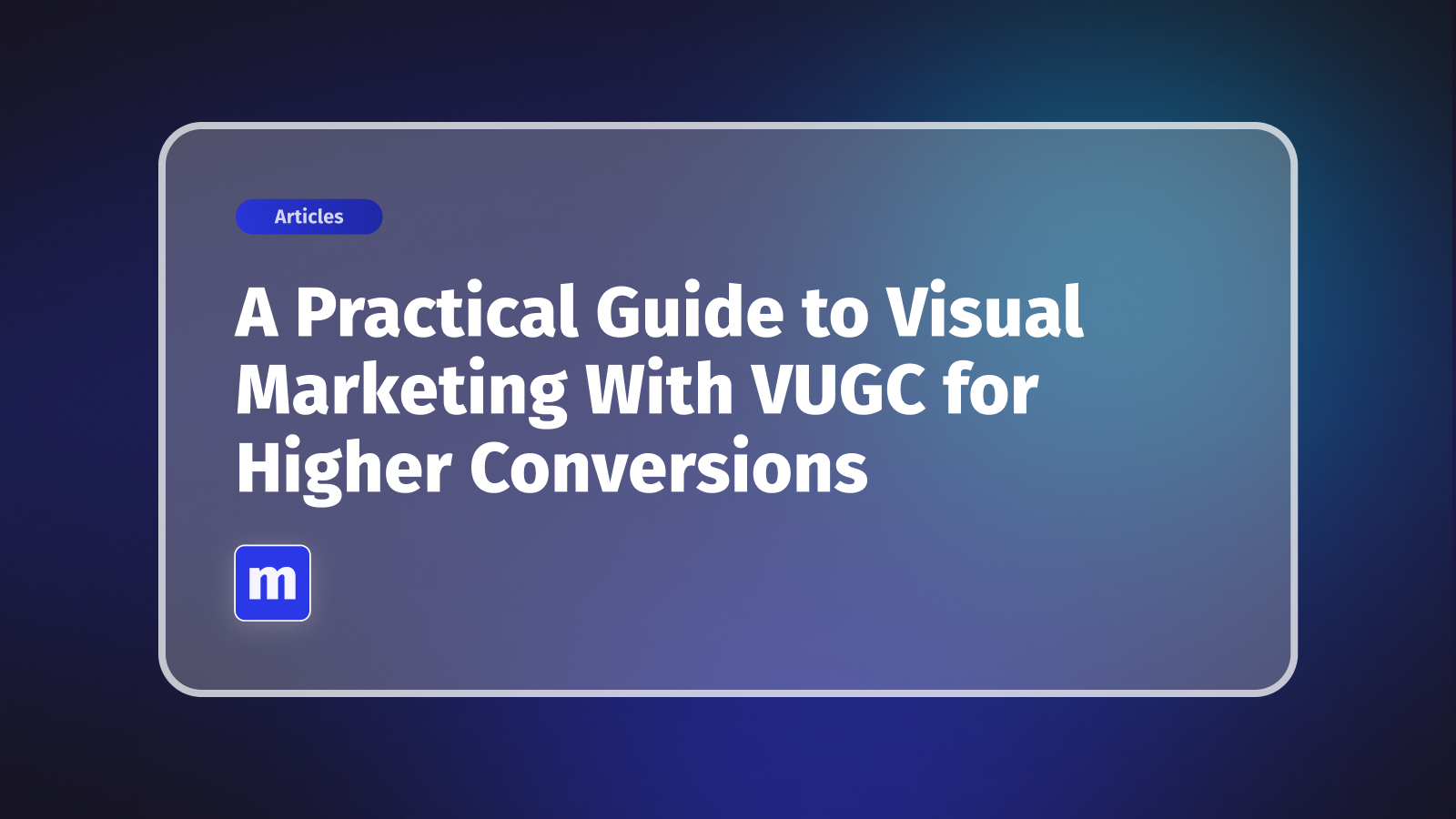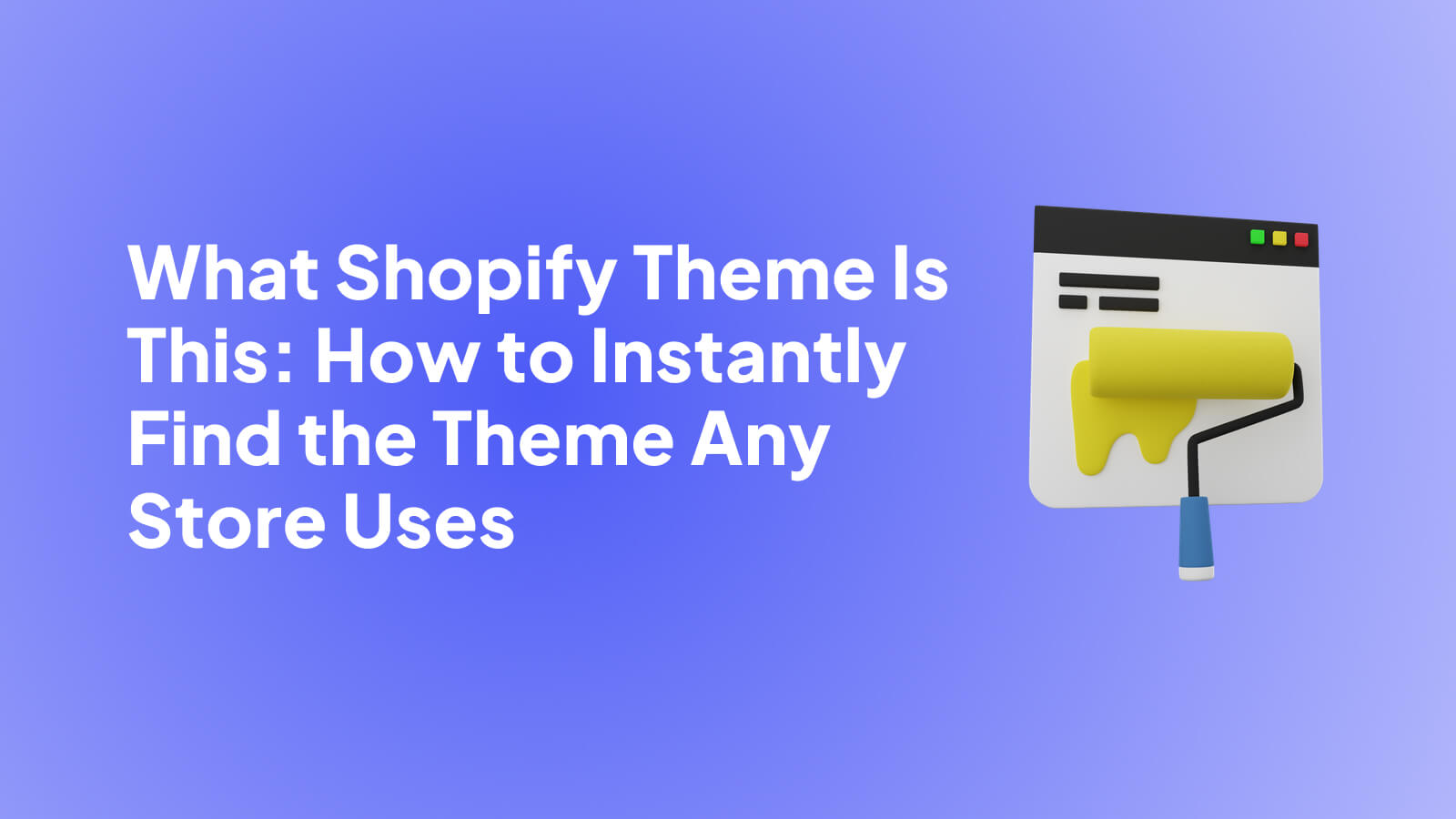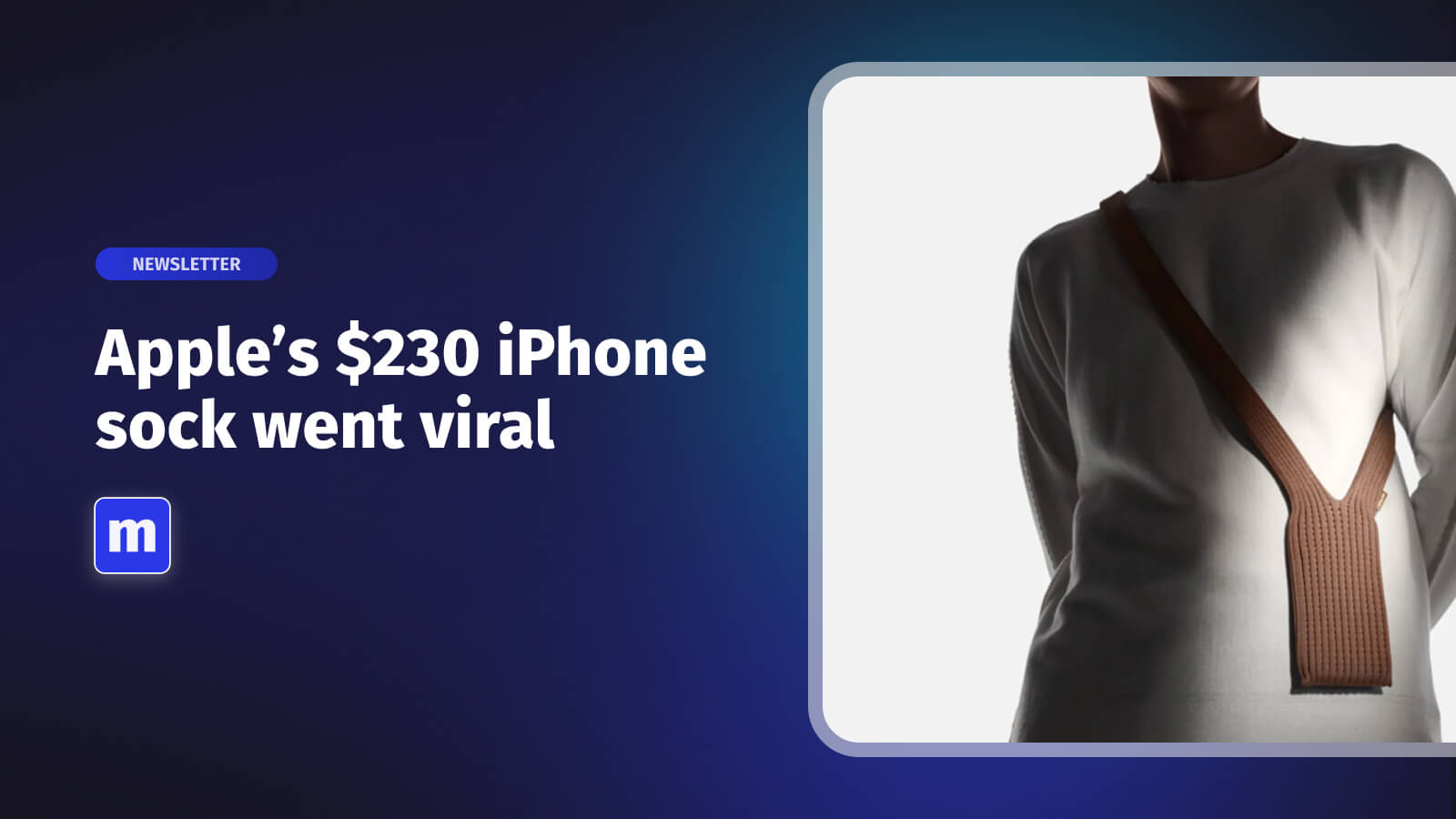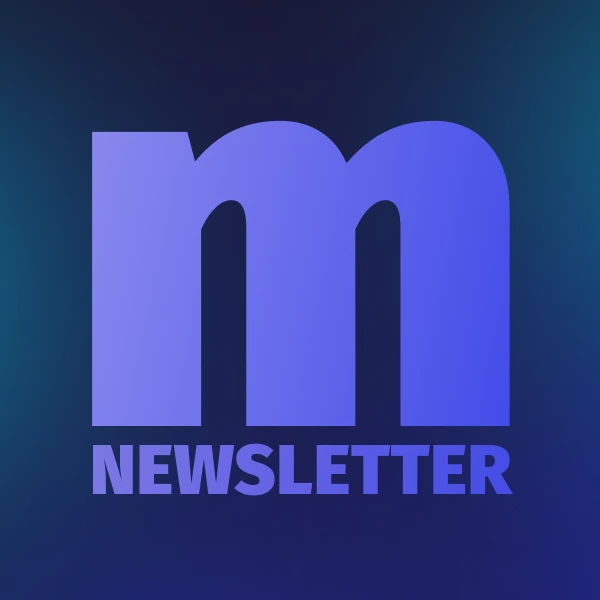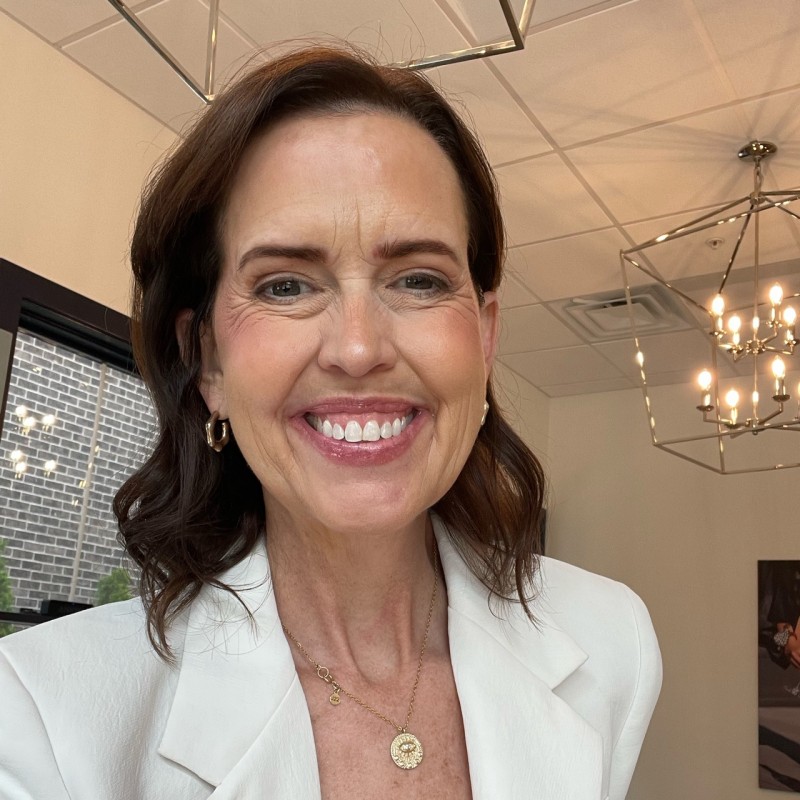.jpg)
In the ever-evolving world of e-commerce, where competition is fierce and attention spans are fleeting, one marketing strategy continues to stand tall as a beacon of customer engagement and sales growth: email marketing. While email marketing as a whole plays a pivotal role in driving revenue for online businesses, it's the art of crafting effective email sequences that truly sets the winners apart from the crowd.
If you're an e-commerce enthusiast looking to boost your sales and connect with your customers on a deeper level, you're in the right place. In this post, we'll be your guide, unveiling five handpicked email sequence examples that have proven to be game-changers for e-commerce businesses.
But first, let's set the stage. Why are email sequences so vital in the e-commerce landscape?
Imagine this: a virtual store with endless aisles and millions of products. Your customers step in, but they're easily distracted by the infinite choices before them. This is where email sequences come into play. They're your friendly, personalized tour guides, leading your customers through the shopping journey, one step at a time.
Email sequences are the secret sauce behind abandoned carts being transformed into completed purchases, one-time buyers turning into loyal customers, and dormant subscribers reawakening their interest. They're not just emails; they're your digital salespeople, working tirelessly to nurture leads, close deals, and build relationships.
In this blog post, we'll unveil five remarkable email sequence examples designed specifically for e-commerce. Each sequence serves a distinct purpose, from welcoming new subscribers to reviving the interest of long-lost customers. We'll break down the strategies, timing, and content that make these sequences successful.
So, whether you're a small e-commerce startup or a seasoned online retail giant, get ready to supercharge your email marketing efforts with real-life examples that have proven their worth. It's time to boost your e-commerce sales and connect with your audience on a whole new level. Let's dive in and explore these effective email sequence examples.
1. The Welcome Sequence
Picture this: A potential customer stumbles upon your online store for the first time. They're intrigued by your products but not quite ready to make a purchase. However, they decide to join your email list, taking the first step towards becoming a valued customer. This is where the welcome sequence comes into play.
Purpose of the Welcome Sequence:
The welcome sequence is your chance to make a fantastic first impression and build a strong foundation for a lasting customer relationship. Its primary goals include:
1. Warm Welcome: Acknowledge and thank new subscribers for showing interest in your brand.
2. Introduction: Introduce your brand's story, values, and what sets you apart from competitors.
3. Engagement: Encourage subscribers to engage with your brand through content, social media, or their first purchase.
Example: The Friendly Welcome
Subject: Welcome to [Your Brand Name]! Let's Begin Our Journey Together
Email 1 - Day 1: Warm Welcome
- Begin with a warm and personalized welcome message.
- Express gratitude for joining your community.
- Offer a brief introduction to your brand's mission and values.
- Include a compelling call-to-action (CTA) to explore your products or website.
Email 2 - Day 3: Meet the Team
- Share a bit about the people behind your brand.
- Humanize your business by introducing key team members.
- Highlight their roles and their passion for what they do.
Email 3 - Day 7: Exclusive Offer
- Provide an exclusive discount or offer as a token of appreciation.
- Create a sense of urgency to encourage the first purchase.
- Include social proof or testimonials if available.
Email 4 - Day 14: Product Spotlight
- Showcase one of your best-selling or most unique products.
- Explain its features, benefits, and how it can solve a problem for the subscriber.
- Include customer reviews or user-generated content related to the product.
Email 5 - Day 21: Valuable Content
- Share informative and engaging content relevant to your niche.
- This could be a how-to guide, industry insights, or a helpful tip.
- Encourage subscribers to explore your blog or resource section.
Email 6 - Day 30: Community Engagement
- Highlight your brand's presence on social media.
- Invite subscribers to join your online community.
- Encourage them to follow, like, and participate in discussions.

Key Takeaways:
- The welcome sequence should be warm, informative, and engaging.
- It's an opportunity to build trust and rapport.
- Encourage interaction and conversion gradually, rather than pushing for immediate sales.
As you can see, the welcome sequence sets the stage for a long and prosperous customer relationship. It's the first step in your e-commerce email marketing strategy, and when done right, it can lead to higher engagement and conversion rates. Next, we'll explore another crucial sequence: the Abandoned Cart Recovery Sequence.
2. The Abandoned Cart Recovery Sequence
In the world of e-commerce, abandoned carts are a common challenge. Shoppers browse your store, add items to their cart, but for various reasons, they don't complete the purchase. That's where the abandoned cart recovery sequence steps in to rescue potential sales.
The Problem: Abandoned Carts
Abandoned carts represent missed opportunities. Customers were interested enough to add products to their cart, but something interrupted the process. Common reasons include unexpected shipping costs, distractions, or simply not being ready to buy at that moment.
Purpose of the Abandoned Cart Recovery Sequence:
The primary goal of this sequence is to nudge hesitant shoppers towards completing their purchase. It accomplishes this through:
1. Reminder: Sending a friendly reminder that the items are still in the cart.
2. Incentive: Offering an incentive like a discount or free shipping to sweeten the deal.
3. Urgency: Creating a sense of urgency to encourage immediate action.
Example: The Cart Saver Sequence
Subject: Don't Miss Out! Complete Your [Product Name] Purchase
Email 1 - Within 1 Hour: Gentle Reminder
- Start with a friendly reminder that the items are still in the cart.
- Highlight the benefits of the products and why the shopper should proceed with the purchase.
- Include a clear CTA to "Complete Your Purchase Now."
Email 2 - After 24 Hours: Offer an Incentive
- Express concern about the abandoned cart and a desire to help.
- Offer an incentive like a limited-time discount or free shipping.
- Emphasize the potential savings and the value of the products.
Email 3 - After 48 Hours: Create Urgency
- Introduce a time-sensitive element, e.g., "Last Chance to Secure Your Items!"
- Mention limited stock or high demand for the items.
- Reinforce the value and benefits of the products.
Email 4 - After 72 Hours: Provide Assistance
- Use a tool like Moast to connect the shopper with an existing customer to have their questions /concerns addressed.
- Include customer support contact information and links to FAQs.
- Reiterate the limited-time offer, if applicable.

Etsy, the popular online marketplace for handmade and unique items, has a well-regarded abandoned cart recovery strategy. Their emails typically include:
1. Product Imagery: Etsy showcases images of the items left in the cart, reminding customers of their choices.
2. Personalization: They use the customer's first name to create a more personalized connection.
3. Seller Engagement: Etsy emphasizes that the purchase supports independent artisans and small businesses, tapping into customers' desire to make a positive impact.
4. Clear CTA: Etsy's emails have a prominent "Get It Now" or "Complete Purchase" button to encourage customers to return to their cart.
5. Trust Signals: They may include trust-building elements like customer reviews, seller ratings, and secure payment options.
6. Urgency: Some emails mention limited stock availability or that the items may not be available for long.
Etsy's approach highlights the unique and personalized nature of their marketplace, aligning with their brand ethos of supporting artisans and creators. It's an example of how e-commerce businesses can tailor their abandoned cart recovery sequences to reflect their specific values and customer base.
Key Takeaways:
- The abandoned cart recovery sequence is a powerful tool for recapturing potential sales.
- Timing is crucial; send reminders at strategic intervals.
- Incentives and urgency can significantly improve conversion rates.
The abandoned cart recovery sequence is like a safety net for e-commerce businesses, helping turn lost opportunities into revenue. It's a valuable part of your email marketing strategy that aims to win back those hesitant shoppers and encourage them to complete their purchases. Next, we'll delve into another key sequence: the Product Recommendation Sequence.
3. The Product Recommendation Sequence
Imagine walking into a physical store, and as you browse the aisles, a friendly salesperson approaches, suggesting items tailored to your interests and preferences. That's precisely what the product recommendation sequence aims to achieve in the digital realm.
The Power of Personalization:
Personalization is at the heart of e-commerce success, and the product recommendation sequence leverages it to provide customers with a tailored shopping experience. It's all about suggesting products that align with the customer's previous purchases, browsing history, or preferences.
Purpose of the Product Recommendation Sequence:
This sequence serves several essential purposes:
1. Increase Sales: By recommending products related to a customer's interests, you can boost cross-selling and upselling opportunities.
2. Enhance User Experience: Personalized recommendations make shopping more enjoyable and convenient for customers.
3. Retention: By consistently offering relevant suggestions, you can keep customers engaged and coming back for more.
Example: The Personal Shopper Sequence
Subject: Discover Your Next Favorites at [Your Store Name]
Email 1 - After a Purchase: Thank You and Suggest Complementary Products
- Begin with a thank-you message for the recent purchase.
- Suggest complementary or related products based on the customer's purchase history.
- Include clear CTAs to explore these products further.
Email 2 - Periodic Recommendations: New Arrivals or Best Sellers
- Share a curated list of new arrivals or best-selling products in the customer's preferred categories.
- Highlight product features and benefits.
- Encourage customers to explore these items with a CTA.
Email 3 - Cart Abandonment with Recommendations: Win Back Abandoned Carts
- For customers with abandoned carts, remind them of the items left behind.
- Suggest related products to the abandoned items.
- Include a sense of urgency or a limited-time offer to encourage a return.
Email 4 - Special Occasion Recommendations: Birthday or Anniversary
- Celebrate special occasions like birthdays or anniversaries.
- Suggest relevant gifts or products for the occasion.
- Offer a discount or exclusive offer as a gift.
Email 5 - Re-Engagement: Products You Might Have Missed
- Reach out to customers who haven't made a purchase in a while.
- Showcase products they might have missed based on their past interests.
- Use persuasive language to encourage them to come back.

Consider Warby Parker, a well-known eyewear brand, as an example of a company that effectively includes product recommendation sequences in its email marketing strategy.
Warby Parker's Product Recommendation Sequence:
1. Post-Purchase Recommendations: After a customer makes a purchase, Warby Parker sends a follow-up email thanking them for their order. In this email, they include personalized product recommendations based on the customer's previous choice of eyeglasses or sunglasses. For example, if a customer bought a pair of prescription eyeglasses, they might receive recommendations for sunglasses or additional eyeglass frames that complement their style.
2. Style Quiz Recommendations: Warby Parker encourages customers to take a style quiz on their website to discover eyewear options that suit their preferences and face shape. After customers complete the quiz, Warby Parker sends emails with tailored product recommendations. These recommendations align with the specific styles and colors that match the quiz results.
3. Seasonal Collections: Warby Parker regularly releases new seasonal collections of eyeglasses and sunglasses. They send emails featuring these collections to their subscribers. These emails showcase the latest designs, styles, and color options, catering to customers' evolving fashion preferences.
4. Event and Promotion-Related Recommendations: Warby Parker sends emails related to special events, promotions, or holidays. These emails often include product recommendations that tie into the occasion. For example, they might send a "Summer Sunglasses Collection" email as the summer season approaches.
Warby Parker excels in providing personalized product recommendations, understanding that eyewear is a highly individualized purchase. By tailoring their emails to customer preferences and behavior, they not only drive sales but also enhance the overall shopping experience for their customers. This approach is a great example of how e-commerce brands can effectively use product recommendation sequences to engage and delight their audience.
Key Takeaways:
- Personalization is key in product recommendation sequences.
- Regularly update recommendations based on customer behavior and preferences.
- Use data-driven insights to suggest products that align with customer interests.
The product recommendation sequence adds a layer of personalization and customer engagement to your e-commerce email marketing strategy. By offering tailored suggestions, you not only enhance the shopping experience but also increase the likelihood of additional purchases, making it a win-win for both you and your customers. Next, we'll explore another essential sequence: the Post-Purchase Follow-Up Sequence.
4. The Post-Purchase Follow-Up Sequence
Closing a sale is undoubtedly a reason to celebrate, but for e-commerce businesses, the journey doesn't end with the purchase. In fact, it's just the beginning. The post-purchase follow-up sequence plays a pivotal role in customer retention and building lasting relationships.
The Importance of Post-Purchase Engagement:
Your customers' experience doesn't conclude when they click "Buy." It extends beyond that moment, encompassing everything from product satisfaction to brand loyalty. The post-purchase follow-up sequence is your opportunity to ensure a seamless transition from one-time buyer to repeat customer.
Purpose of the Post-Purchase Follow-Up Sequence:
This sequence serves several crucial purposes:
1. Confirmation and Gratitude: Confirm the purchase, express gratitude, and reassure the customer about their decision.
2. Product Support: Offer assistance with any product-related questions or issues.
3. Feedback Collection: Encourage customers to provide feedback or reviews, which can build trust and influence future shoppers.
4. Cross-Selling and Upselling: Suggest related or complementary products to encourage additional purchases.
Example: The Appreciation and Support Sequence
Subject: Thank You for Choosing [Your Brand Name]
Email 1 - Order Confirmation and Thank You:
- Start with a confirmation of the customer's order details.
- Express sincere gratitude for their purchase.
- Include clear contact information for customer support or inquiries.
Email 2 - Product Support and Tips:
- Share helpful tips or instructions related to the purchased product.
- Offer troubleshooting advice or answers to common questions.
- Encourage customers to reach out with any concerns.
Email 3 - Request for Feedback:
- Politely request feedback on the product and shopping experience.
- Include a link to a review platform or a survey.
- Mention how their feedback can help improve products and services.
Email 4 - Loyalty Program or Exclusive Offer:
- Invite customers to join a loyalty program or subscribe to exclusive offers.
- Offer them to join your Moast program.
- Provide an incentive, such as a discount on their next purchase.
- Highlight the benefits of being a loyal customer.
Email 5 - Cross-Selling and Upselling:
- Suggest related or complementary products based on the customer's purchase.
- Explain how these products can enhance their experience or solve additional needs.
- Include CTAs to explore these recommendations.

Birchbox, a subscription beauty box service, as an example of a company that effectively uses the post-purchase sequence to engage with customers and enhance their experience.
Birchbox's Post-Purchase Follow-Up Sequence:
1. Order Confirmation and Thank You: Birchbox sends a confirmation email immediately after a customer subscribes to their monthly beauty box. This email includes a summary of the customer's subscription details, such as the box's theme and estimated delivery date. It also expresses appreciation for the customer's decision to join Birchbox.
2. Customized Product Recommendations: Following the initial purchase, Birchbox sends tailored product recommendations to customers based on their beauty preferences and the products they received in their boxes. These recommendations are designed to encourage customers to explore and purchase full-sized versions of the samples they liked.
3. Beauty Tips and Tutorials: Birchbox periodically sends post-purchase emails containing beauty tips, tutorials, and product usage suggestions. These emails aim to educate customers on how to make the most of their beauty products and provide valuable content related to skincare, makeup, and haircare.
4. Referral and Loyalty Programs: Birchbox encourages customers to refer friends and join their loyalty program through post-purchase emails. These programs often offer incentives, such as discounts or bonus beauty products, to reward loyal customers and promote word-of-mouth referrals.
Birchbox's post-purchase follow-up sequence not only ensures a positive unboxing experience but also keeps customers engaged and interested in their beauty products. It's an example of how a subscription box service can use post-purchase communication to foster customer loyalty and brand advocacy.
Key Takeaways:
- Post-purchase follow-up emails should be timely and genuine.
- They should provide valuable support and opportunities for engagement.
- Encourage feedback and use it to enhance the customer experience.
The post-purchase follow-up sequence is a critical component of your e-commerce email marketing strategy. It shows your commitment to customer satisfaction and opens the door to future interactions and purchases. By offering support and suggesting relevant products, you can foster long-term customer loyalty. Next, we'll explore another valuable sequence: the Re-Engagement Sequence.
5. The Re-Engagement Sequence
In the world of email marketing, subscriber engagement is crucial. However, it's not uncommon for some subscribers to become less active over time. The re-engagement sequence is your secret weapon for reviving interest, bringing back dormant subscribers, and rekindling their engagement with your brand.
The Challenge of Inactive Subscribers:
Subscriber lists often include a mix of highly engaged recipients and those who have become disengaged. Inactive subscribers may have stopped opening your emails or interacting with your brand altogether. The re-engagement sequence aims to win them back.
Purpose of the Re-Engagement Sequence:
The re-engagement sequence serves several important purposes:
1. Identify and Reactivate: It helps identify inactive subscribers and attempts to reactivate them as engaged recipients.
2. List Hygiene: By identifying subscribers who are no longer interested, you can improve list hygiene and deliverability rates.
3. Segmentation: It allows you to segment your list effectively, focusing on engaged subscribers while reducing the sending frequency to disengaged ones.
Example: The Win-Back Campaign
Subject: We Miss You! Let's Catch Up
Email 1 - Reintroduction:
- Start with a friendly reintroduction, reminding the subscriber of your brand and the value you offer.
- Express that you've noticed their absence and genuinely miss their presence.
- Include a clear CTA to update their preferences or provide feedback.
Email 2 - Exclusive Offer or Content:
- Offer an exclusive discount, content, or incentive as a gesture of goodwill.
- Highlight what the subscriber has been missing and how this offer benefits them.
- Encourage them to take action, such as making a purchase or revisiting your website.
Email 3 - Social Proof and Success Stories:
- Share success stories or testimonials from other customers who re-engaged with your brand.
- Offer to connect them with an existing customer for a personalized testimonial using tools like Moast.
- Highlight how others have benefited from staying connected.
- Reinforce the value and benefits of being an active subscriber.
Email 4 - Last Chance:
- Create a sense of urgency by letting the subscriber know it's their last chance to re-engage.
- Remind them of the exclusive offer or content from the previous email.
- Encourage them to take action now before the opportunity expires.
Email 5 - Farewell (If No Response):
- If the subscriber still hasn't engaged after previous attempts, send a farewell email.
- Express appreciation for their past engagement and inform them that their subscription will be unsubscribed due to inactivity.
- Include a clear CTA for them to resubscribe if they change their mind in the future.
Groupon, a popular daily deals and discounts platform, as an example of a company that effectively implements a re-engagement sequence to reconnect with inactive users.
Groupon's Re-Engagement Sequence:
1. Reactivation Emails: Groupon identifies users who haven't made a purchase or engaged with their platform for a while. They send reactivation emails with catchy subject lines like "We Miss You, [User's Name]." These emails typically feature eye-catching images of deals and promotions in the user's local area or based on their previous interests.
2. Exclusive Offers: To entice inactive users back, Groupon often includes exclusive offers or discounts in their re-engagement emails. These offers are designed to make users feel special and incentivize them to return and make a purchase.
3. Personalization: Groupon leverages user data to personalize re-engagement emails. They recommend deals and experiences based on the user's previous activity and location. This personalization increases the relevance of the offers presented.
4. Limited-Time Promotions: Groupon creates a sense of urgency by emphasizing that these deals are for a limited time only. They encourage users to take advantage of the offers before they expire, adding an element of FOMO (Fear of Missing Out).
5. Clear CTAs: Groupon's re-engagement emails feature clear and prominent call-to-action buttons, making it easy for users to click through and explore the deals. The CTAs often use persuasive language like "See Today's Deals" or "Get Back to Saving."
Groupon's re-engagement sequence is an effective way to bring back users who may have drifted away. By offering personalized, time-sensitive, and exclusive deals, they entice users to revisit the platform and rediscover the value of their services.
Key Takeaways:
- Re-engagement sequences are essential for maintaining a healthy and engaged subscriber list.
- Personalization and incentives can be effective in winning back inactive subscribers.
- Don't be afraid to remove truly disengaged subscribers to improve email performance.
The re-engagement sequence is a valuable tool in your email marketing arsenal, helping you maintain a responsive subscriber list and rekindling relationships with those who may have lost interest. It's an essential part of list maintenance and can improve your overall email marketing effectiveness. Next, we'll wrap up the blog post with a conclusion.
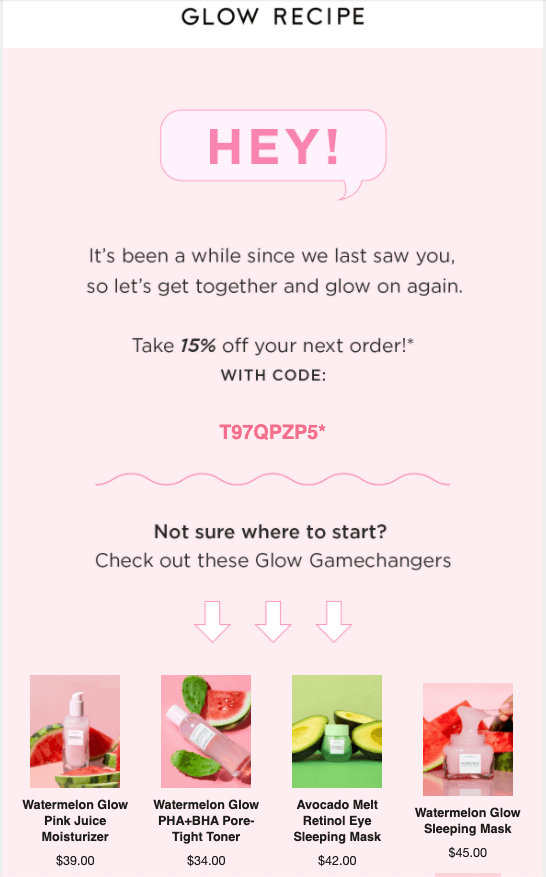
Mastering Email Sequences: Your Key to Boosting E-Commerce Sales
In the fast-paced and highly competitive world of e-commerce, the ability to engage customers effectively can make all the difference between thriving and merely surviving. Email marketing remains a tried-and-true method for nurturing customer relationships, boosting sales, and building brand loyalty. Within this realm, email sequences stand out as powerful tools that guide customers through various stages of their journey with your brand.
Throughout this blog post, we've explored five essential email sequence examples that have proven their effectiveness in the e-commerce landscape. These sequences are not just about sending emails; they're about creating meaningful interactions, personalizing experiences, and ultimately driving results. Let's recap what we've learned:
1. The Welcome Sequence: This friendly introduction sequence lays the foundation for a strong customer relationship. It welcomes new subscribers, introduces your brand's story, and encourages engagement without overwhelming with sales pitches.
2. The Abandoned Cart Recovery Sequence: When potential customers abandon their carts, this sequence swoops in to rescue those sales. It reminds shoppers of their abandoned items, offers incentives, and creates a sense of urgency to encourage a return to the checkout.
3. The Product Recommendation Sequence: Personalization is the name of the game in this sequence. It suggests products tailored to a customer's preferences and history, enhancing the shopping experience and boosting cross-selling and upselling opportunities.
4. The Post-Purchase Follow-Up Sequence: The journey doesn't end at checkout; it continues with the post-purchase sequence. This sequence confirms orders, provides support, collects feedback, and fosters loyalty through exclusive offers and content.
5. The Re-Engagement Sequence: Even in the best of relationships, there are moments of disconnection. The re-engagement sequence reignites the spark with dormant subscribers, reminding them of your brand's value, and inviting them back into the fold.
Each of these email sequences serves a specific purpose and can be tailored to suit your brand's unique voice and audience. Whether you're a small e-commerce startup or an established retail giant, incorporating these email sequences into your marketing strategy can help you drive sales, build stronger customer relationships, and stay ahead of the competition.
Remember, effective email sequences are not just about automation; they're about building meaningful connections with your audience, delivering value at every touchpoint, and creating a seamless and enjoyable customer journey. By implementing these sequences with care and creativity, you'll be well on your way to boosting e-commerce sales and achieving long-term success.
So, armed with these proven email sequence examples, it's time to take your e-commerce marketing efforts to the next level. Start crafting sequences that engage, resonate, and drive action, and watch as your brand thrives in the dynamic world of online retail.
Related content
Turn your social content into a revenue channel
Turn your TikToks and Reels into shoppable videos and boost conversions by 3.5x.

